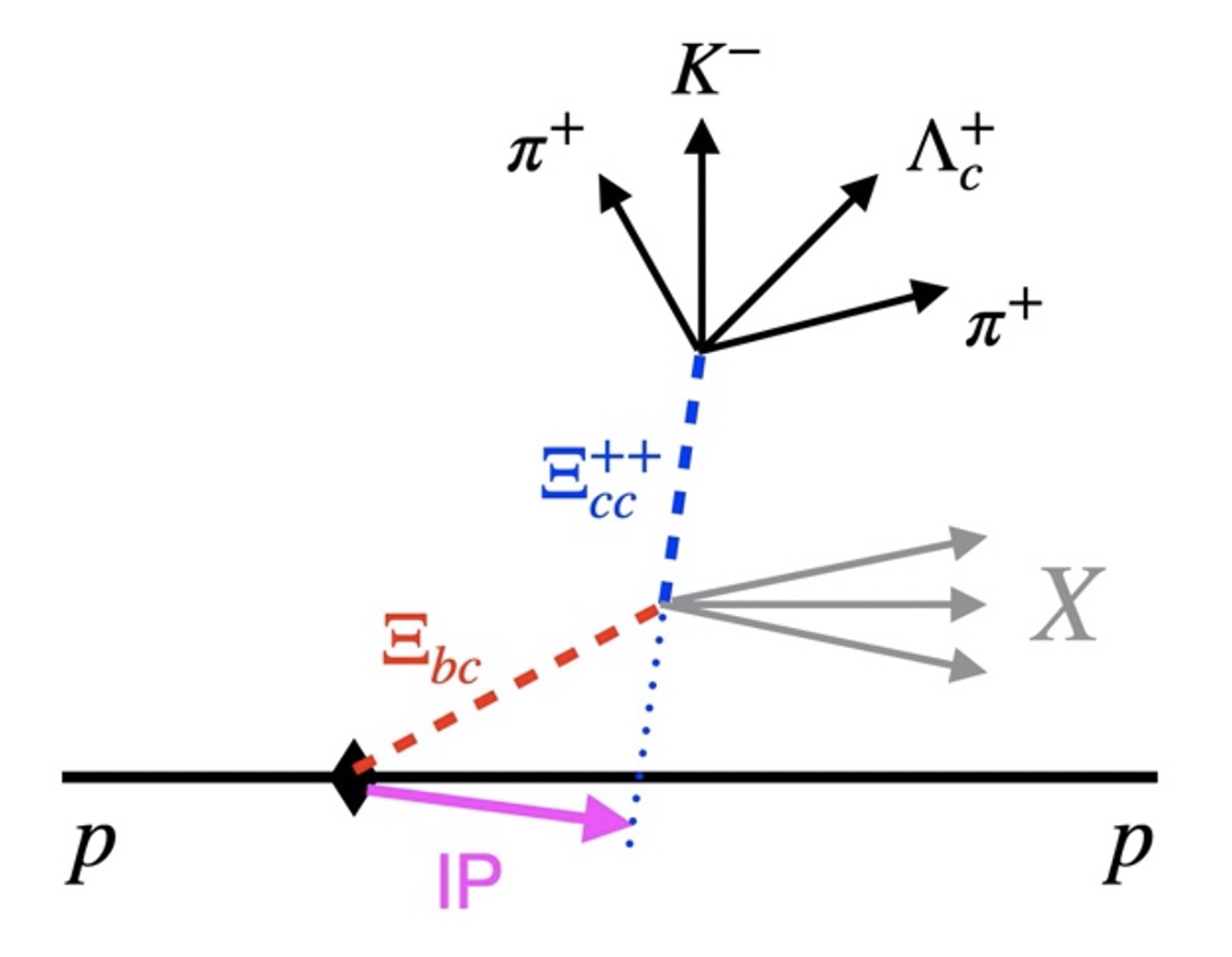On February 7th, a research paper entitled Inclusive approach to hunt for the beauty-charmed baryonsΞbc was published in Physical Review D (Letter) by Prof. Qin Qin from School of Physics, Huazhong University of Science and Technology (HUST), and collaborators, including his PhD student Yang Guohe, Dr. Shi Yuji from Bonn University, Prof. Wang Wei from Shanghai Jiao Tong University, Prof. Yu Fusheng from Lanzhou University and Prof. Zhu Ruilin from Nanjing Normal University.
While the Large Hadron Collider, the giant facility located on the Swiss-French border, is best known for discovering the God particle - the Higgs boson at two of its detectors ATLAS and CMS, another detector LHCb has been a prominent hunter of new hadrons, e.g., the first pentaquark Pc and the first doubly charmed baryon Xcc. These new hadrons are gradually filling in the period table of hadrons as shown in Fig. 1, a more fundamental version of the period table of chemical elements. Especially, Pc opened a new period and Xcc opened a new main group, respectively. The first charming beauty Xbc is one of the next primary targets of LHCb, which will again open a new main group of the period table of hadrons.
The Xbc baryon contains two different heavy quarks, beauty and charm, and a light quark. It resembles a ‘double-star’ core surrounded by a light ‘planet’, forming a distinctive internal structure from all established hadrons. Such a unique structure will provide us with new points of view to decipher the strong interaction. In the past few years, experimentalists have made abundant efforts to search for the beauty-charmed baryons but not succeeded yet. Traditional exclusive searches for Xbc are faced with a major difficulty: The Xbc baryon contains a beauty quark, which decays with an extremely low probability into any particular exclusive final state, so all exclusive searches have very low reconstruction efficiencies. To overcome this difficulty, Qin and collaborators proposed to hunt Xbc via an inclusive decay channel, Xbc → Xcc + X with X representing all possible particles, as shown in Fig. 2. The most advantageous feature of this process is that Xbc will fly a certain distance before decaying into Xcc, thus forming a Xcc displaced from the primary collision point. Because Xbc is almost the only source of this phenomenon, observation of displaced Xcc would indicate the discovery of Xbc. This approach is similar to the discovery of Neptune via Uranus perturbation in astronomical observation.
Based on effective theories of quantum chromodynamics and the heavy quark symmetry, Qin and collaborators further developed the heavy diquark effective theory, and hereby calculate the Xbc → Xcc + X decay probability theoretically. It turns out that the decay branching ratio is approximately 10%, which is larger than any of the exclusive decay processes by orders of magnitude. Taking into account the production rate of Xbc and the detection efficiency of Xcc, it is evaluated that the LHC will be able to collect approximately 300 Xbc baryons through this inclusive decay process when it completed its 3rd running phase. Therefore, it is highly hopeful that Xbc will be discovered via this inclusive approach, which will then be another milestone in the field of new hadron spectrum.

Fig. 1. The period table of hadrons.

Fig. 2. Sketch of Xbc production and decay at the LHC.
Paper Link: https://journals.aps.org/prd/abstract/10.1103/PhysRevD.105.L031902
Source: School of Physics
Written by: Qin Qin, Yang Guohe
Edited by: Luo Xin, Jiang Jing
